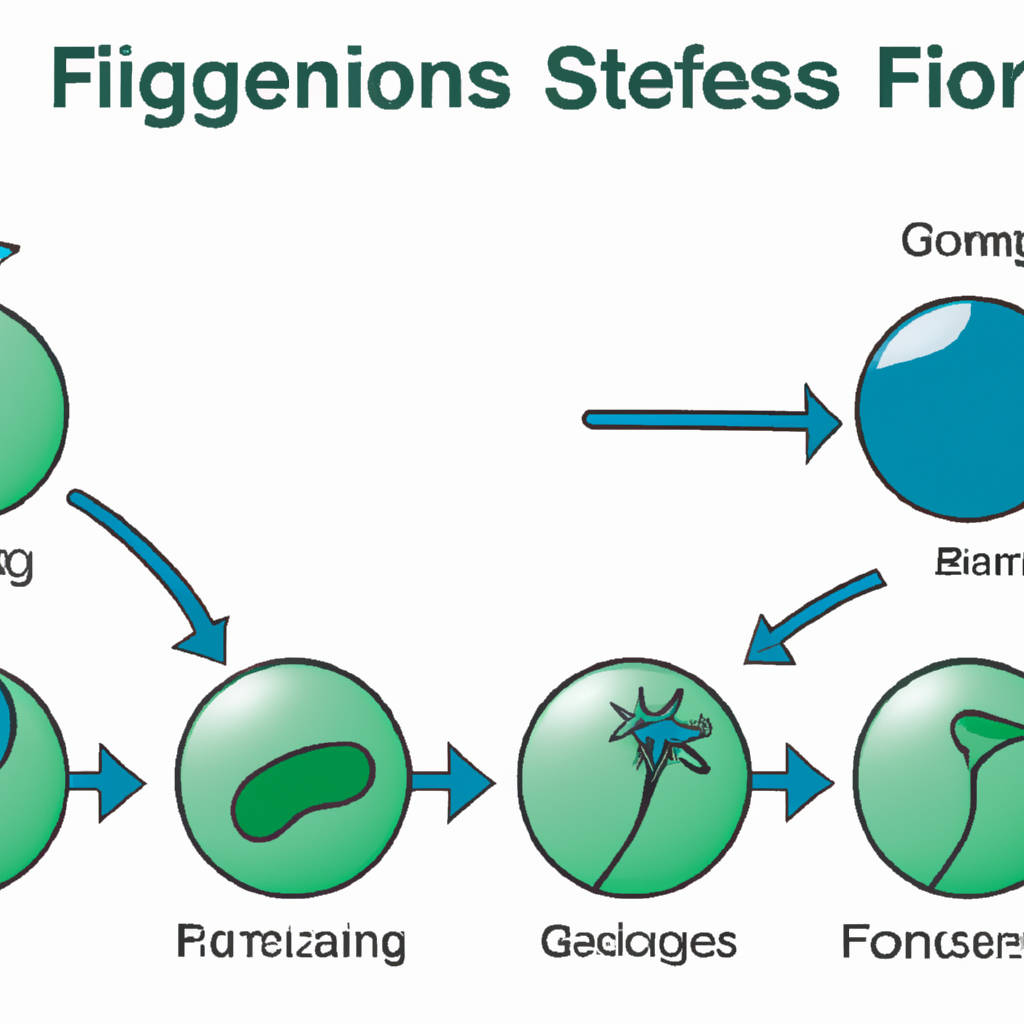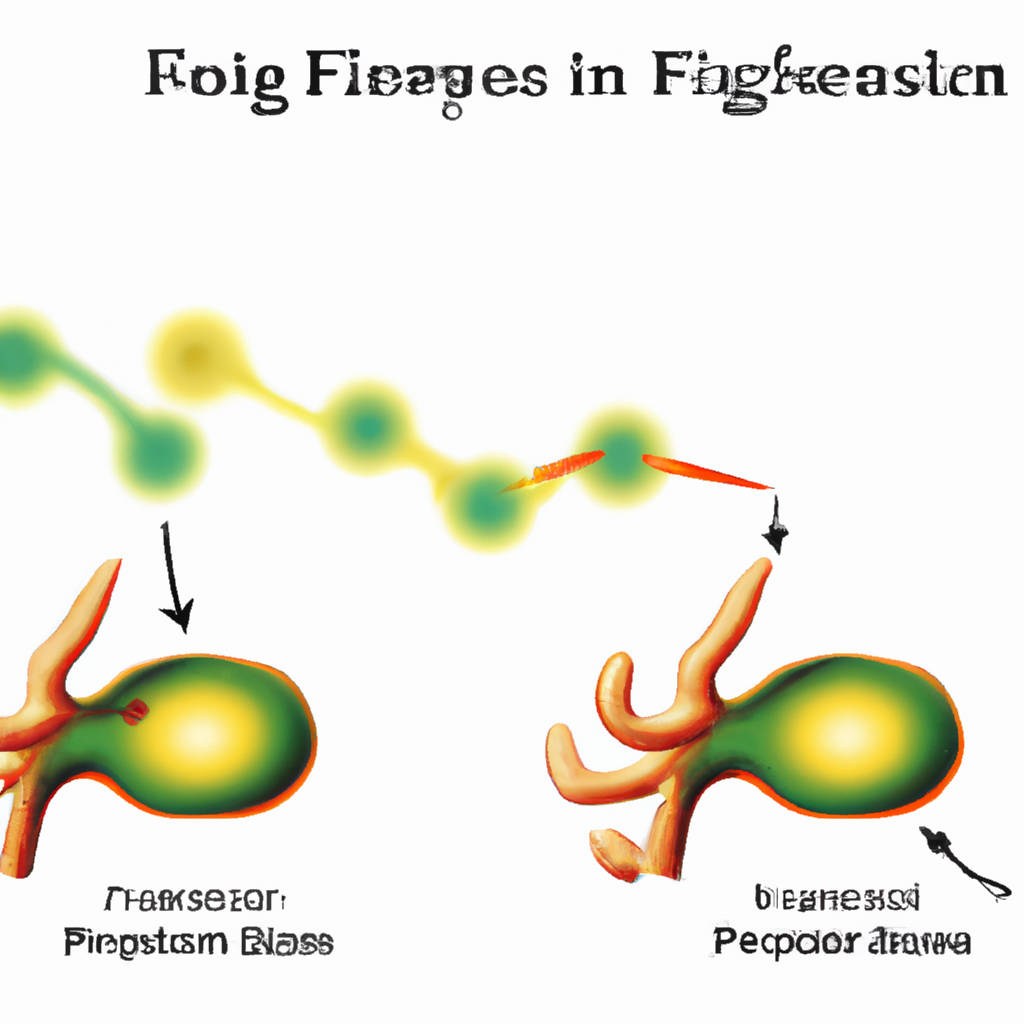Fibroblast growth factors (FGFs) are a family of proteins that play crucial roles in various biological processes, including cell growth, development, and tissue repair. The FGF family consists of 22 members that are involved in signaling pathways that regulate cell proliferation, differentiation, and survival. These proteins bind to specific cell surface receptors, known as FGF receptors, and initiate a cascade of intracellular signaling events that ultimately lead to changes in gene expression and cellular behavior. Dysregulation of FGF signaling has been implicated in a wide range of diseases, including cancer, cardiovascular disorders, and developmental abnormalities.
Due to their importance in controlling cellular functions, FGFs have attracted significant attention as potential targets for therapeutic intervention. Researchers have been exploring the use of FGFs and FGF receptor inhibitors as potential treatments for various diseases. For example, FGFs have shown promise in promoting tissue regeneration and wound healing, making them potential candidates for the development of novel therapies for conditions such as diabetes and chronic wounds. Additionally, targeting FGF signaling pathways has been considered as a strategy to inhibit the growth and spread of cancer cells, offering new hope for cancer patients.
Despite the therapeutic potential of targeting FGF signaling, there are challenges that need to be addressed in the development of FGF-based therapies. For example, FGFs have pleiotropic effects in the body, meaning that they can have different and sometimes opposing effects depending on the context and cellular environment. This complexity makes it challenging to develop targeted therapies that selectively modulate FGF signaling without causing unintended side effects. Additionally, FGFs are known to interact with other signaling pathways and molecules in the body, further complicating the development of effective therapies.
Researchers are also exploring the use of FGF-based therapies in regenerative medicine, with the goal of harnessing the regenerative potential of FGFs to repair damaged tissues and organs. For example, FGFs have been studied for their ability to stimulate the growth of new blood vessels, which could be beneficial for patients with cardiovascular diseases or those recovering from injuries. Additionally, FGFs have been shown to promote the growth and differentiation of stem cells, offering new possibilities for tissue engineering and regenerative medicine applications.
In conclusion, the FGF family plays a critical role in controlling a wide range of biological processes, and targeting FGF signaling pathways holds promise for the development of new therapies for various diseases. While there are challenges that need to be addressed in the development of FGF-based therapies, ongoing research in this field continues to uncover new insights into the biology of FGFs and their potential therapeutic applications. With further research and development, FGF-based therapies may offer new hope for patients suffering from a variety of diseases and conditions.

Overview of FGF Family
The Fibroblast Growth Factor (FGF) family is a group of signaling proteins that play crucial roles in various biological processes, including cell growth, development, and wound healing. There are 22 members in the FGF family, which can be further divided into canonical and non-canonical subfamilies based on their structure and function. Canonical FGFs bind to specific cell surface receptors called Fibroblast Growth Factor Receptors (FGFRs), which then activate intracellular signaling pathways that regulate cell proliferation, differentiation, and survival.
Non-canonical FGFs, on the other hand, do not bind to FGFRs and instead interact with other cell surface receptors or extracellular matrix components to mediate their effects. The FGF family members are highly conserved across species, indicating their importance in evolution and development. Dysregulation of FGF signaling has been implicated in various diseases, including cancer, skeletal disorders, and developmental abnormalities. Therefore, understanding the functions and mechanisms of action of FGF family members is essential for developing targeted therapies for these conditions. Research on the FGF family continues to uncover new roles and interactions of these proteins, expanding our knowledge of their functions in health and disease.
Biological Functions of FGFs
Fibroblast growth factors (FGFs) are a family of proteins that play a crucial role in various biological functions within the body. These proteins are responsible for regulating cell growth, differentiation, and survival. FGFs are also involved in processes such as wound healing, tissue repair, and embryonic development. Furthermore, FGFs have been found to be important in the regulation of angiogenesis, the formation of new blood vessels, which is essential for supplying oxygen and nutrients to tissues. In addition, FGFs play a role in the maintenance of stem cell populations and have been shown to have neuroprotective effects in the central nervous system.
Overall, FGFs are essential for the proper functioning of the body and are involved in a wide range of physiological processes. Dysfunction of FGF signaling has been linked to various diseases, including cancer, cardiovascular disorders, and developmental abnormalities. Therefore, understanding the biological functions of FGFs is crucial for developing targeted therapies for these conditions. In conclusion, FGFs are versatile proteins that play a vital role in maintaining the health and functioning of the body, and further research into their functions could lead to significant advancements in medical treatment and disease prevention.

Role of FGFs in Development and Healing
Fibroblast growth factors (FGFs) play a crucial role in development and healing processes in the human body. These proteins are responsible for regulating cell growth, proliferation, differentiation, and survival. During embryonic development, FGFs are essential for the formation of various tissues and organs. They help in the development of the nervous system, blood vessels, and limbs. Additionally, FGFs play a critical role in wound healing and tissue repair.
When an injury occurs, FGFs are released by damaged cells and nearby tissues to promote the growth of new blood vessels and the formation of granulation tissue. This tissue provides a scaffold for the migration of fibroblasts and other cells involved in the healing process. FGFs also stimulate the production of collagen, which is essential for the strength and integrity of the healed tissue. In addition to their role in development and healing, FGFs have been shown to have a variety of other functions in the body. They are involved in regulating metabolism, bone formation, and hair growth.
Dysregulation of FGF signaling pathways has been linked to a number of diseases, including cancer, diabetes, and cardiovascular disorders. Understanding the role of FGFs in development and healing is crucial for developing new therapies for a wide range of medical conditions. Research in this area is ongoing, and scientists are continuing to uncover the complex mechanisms by which FGFs interact with other signaling molecules to regulate cell behavior and tissue regeneration. By gaining a better understanding of these processes, researchers hope to develop more effective treatments for a variety of diseases and injuries.
Pathophysiology of FGF Signaling
Fibroblast growth factor (FGF) signaling plays a critical role in various biological processes, including cell growth, differentiation, and tissue repair. Dysregulation of FGF signaling can lead to a variety of pathophysiological conditions. One key aspect of FGF signaling is its involvement in cancer development and progression. Aberrant FGF signaling has been implicated in promoting tumor growth, invasion, and metastasis in various types of cancer. Additionally, mutations in FGF receptors or ligands have been associated with certain genetic disorders and developmental abnormalities.
For example, mutations in the FGF receptor 3 gene can lead to skeletal disorders such as achondroplasia and thanatophoric dysplasia. Furthermore, dysregulated FGF signaling has been linked to various cardiovascular diseases, including atherosclerosis and cardiac hypertrophy. In these conditions, FGF signaling can promote inflammation, endothelial dysfunction, and vascular remodeling.
Understanding the pathophysiology of FGF signaling is crucial for developing targeted therapies to treat diseases associated with aberrant FGF signaling. Researchers are actively investigating the mechanisms underlying FGF signaling dysregulation and exploring potential therapeutic strategies to modulate FGF signaling pathways. By elucidating the intricate regulatory mechanisms of FGF signaling, scientists hope to develop more effective treatments for a wide range of diseases, from cancer to cardiovascular disorders.

Therapeutic Applications of FGFs
Fibroblast Growth Factors (FGFs) have shown great promise in therapeutic applications due to their ability to stimulate cell growth, proliferation, and differentiation. FGFs have been studied for their potential use in treating a variety of medical conditions, including wound healing, tissue regeneration, and neurological disorders. One of the key benefits of FGFs is their ability to promote angiogenesis, the formation of new blood vessels, which is crucial for wound healing and tissue repair.
In addition, FGFs have been shown to have neuroprotective effects, making them a potential treatment option for conditions such as Alzheimer’s disease and Parkinson’s disease. FGF therapy has also shown promise in promoting bone regeneration and cartilage repair, making it a potential treatment option for orthopedic injuries and conditions such as osteoarthritis. Overall, the therapeutic applications of FGFs hold great potential for improving the treatment of a wide range of medical conditions and injuries, offering new hope for patients seeking alternative and potentially more effective treatment options.
Final Thoughts
As we come to the end of our discussion, it is important to reflect on the key points that have been raised. It is clear that there are many nuances to consider when evaluating a situation or decision. While some actions may be deemed unacceptable by society, it is essential to remember that context and individual circumstances can play a significant role in shaping our perceptions. By taking a step back and considering the bigger picture, we can gain a deeper understanding of the complexities at play.
It is crucial to approach each situation with an open mind and a willingness to consider multiple perspectives. In doing so, we can foster a more inclusive and empathetic approach to navigating the complexities of life. Ultimately, our final thoughts should be guided by a sense of compassion, understanding, and a commitment to seeking justice and fairness for all involved.
It is through this lens that we can strive to make informed and ethical decisions that uphold the values of respect, integrity, and dignity for all individuals. As we move forward, let us remember the importance of critical thinking, empathy, and a willingness to engage in meaningful dialogue. By doing so, we can contribute to a more just and equitable society for all.
